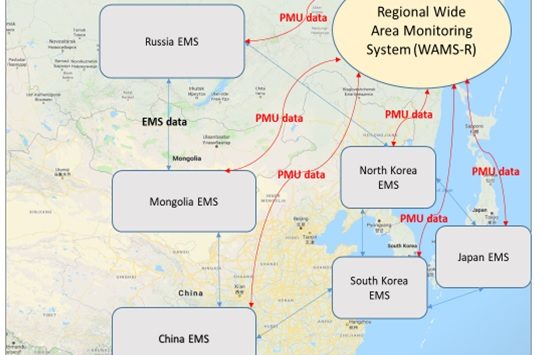JAY GIRI
MAY 9, 2019
I. INTRODUCTION
In this essay, Jay Giri “describes real-time grid management, control center EMS functions and inter-utility data exchange. It also describes the benefits and challenges of inter-utility grid management and examples of international utilities working together. It specifically addresses modeling requirements for international inter-utility operation. Finally, it describes an innovative emerging solution for more effective inter-utility grid operations that helps improve management of the entire interconnection.” The paper prefigures a regional Wide Area Monitoring System using synchrophasors in Northeast Asia.
Jay Giri is an Independent Consultant with GGM Consulting
This study was paper prepared for the Regional Energy Security Project Working Group Meeting, China Foreign Affairs University (CFAU), April 8–10, 2019 and is funded by the MacArthur Foundation.
A downloadable PDF file of this report is found here.
The views expressed in this report do not necessarily reflect the official policy or position of the Nautilus Institute. Readers should note that Nautilus seeks a diversity of views and opinions on significant topics in order to identify common ground.
This report is published under a 4.0 International Creative Commons License the terms of which are found here.
Banner image: GGM Consulting
II. NAPSNET SPECIAL REPORT BY JAY GIRI
DATA AND MODELING REQUIREMENTS FOR ELECTRICITY GRID INTERCONNECTIONS
MAY 09, 2019
This Special Report provides the following excerpts only from the full report:
Summary
1: INTRODUCTION
7. PROSPECTS FOR INTERNATIONAL DATA EXCHNAGE IN FAR EAST ASIA
8. AN INNOVATIVE SOLUTION TO FUTURE MULTI-UTILITY GRID MANAGEMENT — EMS-WAMS
9. PROPOSED INNOVATIVE SOLUTION FOR THE FAR EAST ASIA GRID
10. CONCLUDING THOUGHTS
The full report may be downloaded here (1MB PDF file).
Summary
Large electrical interconnections consist of many individual electric utilities whose primary responsibility is to manage just their portion of the grid. The utility is typically connected to many other utilities in the interconnection. Actions taken within one’s own portion of the grid have an influence on its neighbors. Hence it is vitally important to coordinate one’s own electric utility grid management actions with all the neighbors since they could be potentially impacted.
Utilities have a control center with grid operators to manage their portion of the grid round the clock. These centers continually monitor real-time grid conditions in their portion of the grid to assess current status, potential threats and vulnerabilities. Operators take appropriate actions when needed to preserve the reliability and security of the grid. The goal is to ensure that the lights always stay on for all customers.
Control centers primarily consist of a hardware and software platform called an Energy Management System (EMS). These centers also communicate real-time data and operational information with neighboring control centers.
Today, uncertainties in the grid are rapidly increasing due to the growth of less predictable renewable generation resources, demand response programs, distributed generation, microgrids, potential cyber-security issues, and in some cases the aging infrastructure.
Therefore, today, it is of greater importance to have utilities cooperate with each other by sharing real-time information and data, in order to work jointly together as a single team, to preserve the integrity of the entire interconnection.
This paper describes real-time grid management, control center EMS functions and inter-utility data exchange. It also describes the benefits and challenges of inter-utility grid management and examples of international utilities working together. It specifically addresses modeling requirements for international inter-utility operation. Finally, it describes an innovative emerging solution for more effective inter-utility grid operations that helps improve management of the entire interconnection.
1. INTRODUCTION
Electricity is invisible — and omnipresent in most parts of the world.
In 1881, Thomas Edison created the first electric power company (in New York City, in the United States) to generate power and supply it to customers. Power then was transmitted as direct current (DC) via what we today term a micro-grid: a small, self-contained system of generation, transmission, and consumption. By the 1930s, power transmission had evolved to alternating current (AC) interconnected systems. Over time, these power companies started connecting with their neighbors for support during emergencies and to benefit from cheaper power from neighbors. This has led to large electrical interconnections which consist of many individual power companies.
The modern power grid is a large electrical interconnection and one of the most complex engineering machines in existence. Millions of components comprise the electricity supply chain, from generation to the end consumer. All these components must work reliably, 24-hours-a-day, seven-days-a-week, to power our homes and businesses.
Grid conditions are continually changing. Changes in electricity demand necessitate instantaneous changes in electricity production. Consequently, voltages, currents, and power flows in lines, transformers and generators are constantly changing around the clock.
The grid management challenge is to ensure that these changing power system operating conditions always stay within safe limits, including for potential, probable future contingencies.
In 2000, the U.S. National Academy of Engineers (NAE) selected Electrification as the “most significant engineering achievement of the last century.”
This paper focuses primarily on the high voltage transmission grid. It describes the following topics:
- The Electricity Supply Chain
- Real-time Transmission Grid Management
- Control Center EMS functions
- EMS Data modeling
- Inter-utility Data Exchanges
- Practical Examples of Inter-Utility Data Exchanges
- Prospects for International Data Exchange in Far East Asia
- Innovative Multi-Utility Future Grid Management
- Proposed Innovative Solution for Far East Asia Grid Management
7. Prospects for International Data Exchange in Far East Asia
Figure 12 pictorially depicts different national control centers of the Far East Asia region. Each EMS manages their own national grid. Each nation has interconnections with neighboring nations. Each nation has its own EMS vendors, with implementations of different vintages, and differing complexities of real-time applications and capabilities. Some may just have a small subset of EMS applications, some may have a full set. Some may have a hierarchy of control centers with the national center at the top. Some countries may operate at a different frequency than their neighbors.
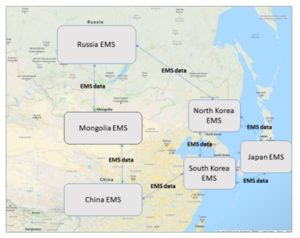
Figure 12: International Control Centers of Far East Asia
Source: GGM Consulting
In order to exchange real-time data, they will need to implement inter control center data exchange protocols, as described in an earlier section. Sharing real-time information from neighboring countries’ major substations will help each country operate its grid in a more effective and secure manner. This is especially beneficial with the growth of cheap renewable resources in the different countries. Generation from renewables are constantly changing and cannot be easily predicted. With strong interconnections, economic power can be quickly shared with neighbors.
The growing diversity of power generation portfolios in the different countries, due to the rapid development of renewable energy sources (RES) could result in greater interdependence across the Far East region. Renewables are connected to the grid with inverters. They typically do not provide support during emergencies since they have minimal inertia and inadequate voltage support. Today there are smart inverters that provide artificial inertia and voltage support during emergencies.
Therefore, transmission system design must look beyond national boundaries and move towards multi-national regional solutions. This could include DC transmission overlays on the AC system. If we need to connect systems with different operating frequencies (say 50 Hz and 60 Hz), AC/DC/AC back-to-back converters are a solution. HVDC lines could be used to economically transfer large amounts of power across a great distance.
Many of these solutions are already in operation and/or under development in many nations of the Far East grid.
Figure 13 shows China’s HV transmission network today and the future.
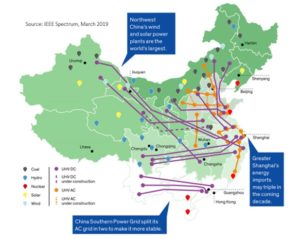
Figure 13: China’s National Grid Plans
Source: IEEE Spectrum, March 2019
National electricity system expansion plans have in the past been primarily focused on operation of their own national grids. These will need to be augmented now, with overall international regional objectives in mind. Cooperation in joint planning and operations of the different nations is required to achieve more effective operations and to improve overall regional reliability, security and cost efficiency.
Recommended data exchanges include:
- Real-time conditions at substations
- This could be a small subset of critical high voltage substations
- At a regular, periodic rate of say minutes to hours
- Network topology changes
- This could be only for major critical grid equipment
- Report on an exception basis — or only when their status changes
- Network Model changes
- This could be just for the grid network that is close to neighbors’ boundaries
- Report on an exception basis — or only when major changes are made
8. An Innovative Solution to future Multi-utility Grid Management–EMS-WAMS
8.1 Introduction
Managing the future grid will require creative, innovative solutions. Uncertainties in the grid are increasing due to the growth of less predictable renewable generation resources, demand response programs, distributed generation, microgrids, potential cyber-security issues, the retiring workforce and the aging infrastructure.
Recently there has been a sudden growth in the deployment of a new type of grid measurement technology in installations all around the world. These measurement devices are called synchrophasors.
“Synchrophasors are precise grid measurements now available from field device monitors called phasor measurement units (PMUs). Measurements includes voltage and current — magnitudes and angles — frequency, rate of change of frequency and status data. PMU measurements are typically 30-120 observations per second — compared to every 2-4 seconds using conventional EMS technology. Each measurement is precisely time-stamped using a common time reference. Time stamping allows synchrophasors from across the grid to be time-aligned (or “synchronized”). Together, they provide a precise and comprehensive snapshot of the entire interconnection. Synchrophasors provide an immediate indication of grid stress, and can be used to trigger corrective actions to maintain reliability.”
Synchronized phasor measurements (synchrophasors) provide a phasor representation of voltage and current waveforms, representing a sinusoidal signal simply as a magnitude and phase angle, with an associated timestamp. Synchrophasor analytics extract information from the PMU data streams and do not need a grid model.
Today, EMS capabilities are poised to be enhanced quite dramatically with the integration of the growing number of synchrophasor PMU measurements.
8.2 The Modern EMS with Synchrophasors: EMS-WAMS
Today, many EMS control centers are receiving sub-second PMU data. PMUs generates very high volumes of synchrophasor and synchroscalar measurement data. This massive amount of data is used to provide additional useful information for grid operators. The modern EMS is evolving into a vast, diverse conglomeration of monitoring devices and advanced computer and communications technology that measures power system field conditions at sub-second rate.
Sub-second data rates mean the dynamic behavior of the grid can be readily assessed at the EMS; this was not possible in the past. Also, accurate GPS time-stamping allows voltage phase angle differences to be compared at two different parts of the grid providing a summary indicator of power system stress.
Figure 14 illustrates the modern EMS (EMS-WAMS) control center functions and tools. They include the new sub-second Phasor Measurement Unit (PMU) measurement data and analytics.
The functions on the left of the represent the traditional EMS that is based on a user-defined model of the transmission system.
The functions on the right are called WAMS (wide area monitoring systems). These are new analytics that augment the EMS with sub-second monitoring; these do not need a model of the power grid, the actual power grid is the model. WAMS analytics includes:
- Angular Separation
- precisely indicates grid overloads or outages
- State Measurement
- sub-second tracking of substation voltages
- Stability Monitoring
- oscillatory, voltage and transient
- Disturbance Location Identification
- Island detection and re-synchronization
Some of the benefits of a modern EMS-WAMS include:
- Faster identification of grid problems — prompt operator alerts and alarms.
- Monitoring of grid oscillations — to detect those that impact grid operations.
- Voltage and angular grid stability analysis in real time.
- Identification of grid disturbances outside one’s own SCADA purview.
- Fast detection of grid separation and partial grid blackouts
- Tools for reconnecting portions of the grid that are separated or de-energized
- Faster disturbance event analysis — provide information on what just happened.
- More robust and accurate SE solutions.
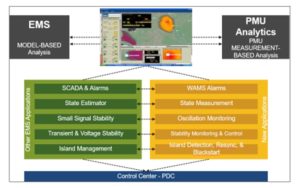
Figure 14: Modern EMS-WAMS control center
Source: GE Grid Solutions
These EMS-WAMS capabilities provide grid operators with a wide-reaching visibility into the status of the grid, as well as, provide the ability to predict and plan for potential problems that may be lurking around the corner. Speed is of the essence when it comes to assessing the cause of grid problems — and more importantly, implementing quick, corrective actions.
9. Proposed innovative solution for the Far East Asia Grid
A new WAMS control center could be created at the Far East interconnection level that uses PMU data from across the grid.
Figure 15 shows a proposed regional WAMS (WAMS-R) and its connections with the national control center EMSs.
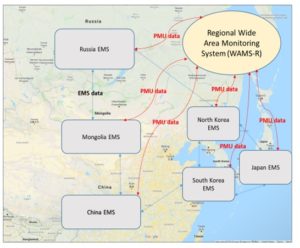
Figure 15: Wide Area Monitoring of Far East Asia — WAMS-R
Source: GGM Consulting
Building WAMS-R in Far East Asia would be a major technical, business and political effort. It will involve significant cooperation of all nations involved.
A suggested time-line and plan of action is:
- If PMU data are available at any of the EMSs, integrate them to create an EMS-WAMS
- Add new PMUs and bring their data into the EMS
- Integrate the new PMUs into the EMS
- Add new WAMS analytics to use all the PMU data
- Create a new regional WAMS (WAMS-R) control center for the Far East Asia region
- Send PMU data from all the national EMS to WAMS-R
- Add new PMU analytics to WAMS-R
- Add new operator displays and monitoring in WAMS-R
- When WAMS-R detects violations immediately alert all national EMSs
- Work with the national EMSs to develop corrective action plans when necessary
10. Concluding thoughts
Electrical interconnections typically consist of millions of grid components. These are monitored and managed in real-time by numerous electric utilities. These utilities are independently responsible for just subsets of the interconnection. Grid management decisions made by one utility may affect neighbors due to the physics of electricity. Hence it is important for utilities to work together, to address problems, and to jointly develop corrective plans.
The recent rapid growth of renewable energy resources and distributed energy resources pose additional grid management challenges. These cannot be controlled by the utility grid operator and are not easily predictable — adding new challenges for the operator to overcome.
One way to mitigate future grid challenges is to have all grid operators in the interconnection work together, by sharing real time data with each other, and by jointly developing corrective solutions.
Increasing real-time transparency with neighbors will improve effective management of the overall interconnection. This will also allow for utilities to share energy with one another, in a mutually beneficial economic manner which results in reduced costs to customers in the region.
More recently, synchrophasor PMU analytics have been introduced at control centers, which significantly improves the utility operators’ capabilities. EMS-WAMS control centers at the higher interconnection level can immediately share grid alerts with all utility operators to ensure all have the same information. This will enable development of an interconnection-wide, holistic, shared, transparent corrective action plan, for the entire region.
III. NAUTILUS INVITES YOUR RESPONSE
The Nautilus Asia Peace and Security Network invites your responses to this report. Please send responses to: nautilus@nautilus.org. Responses will be considered for redistribution to the network only if they include the author’s name, affiliation, and explicit consent


